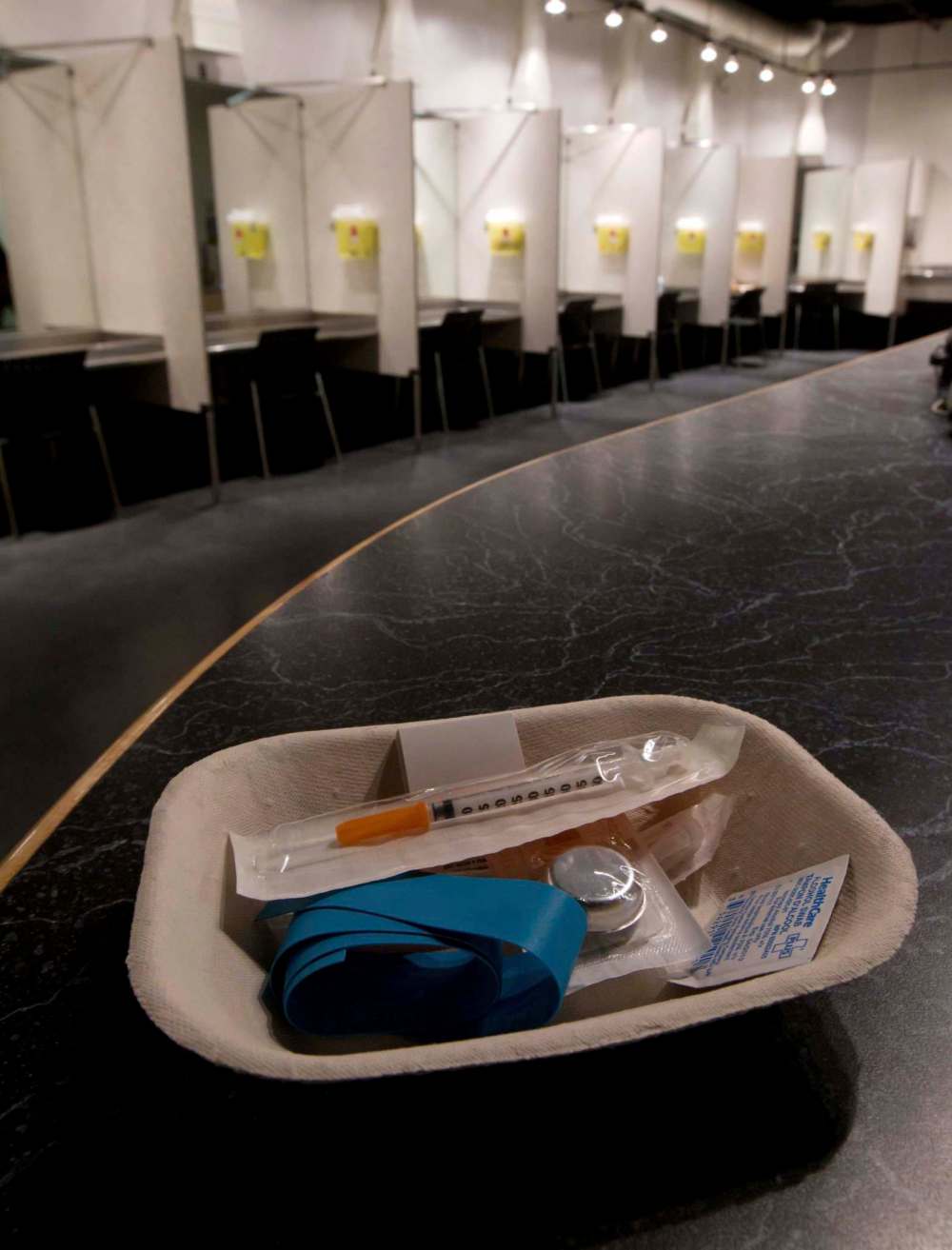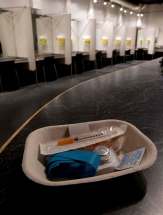Grim stats shift public opinion on injection sites
Read this article for free:
or
Already have an account? Log in here »
To continue reading, please subscribe:
Monthly Digital Subscription
$0 for the first 4 weeks*
- Enjoy unlimited reading on winnipegfreepress.com
- Read the E-Edition, our digital replica newspaper
- Access News Break, our award-winning app
- Play interactive puzzles
*No charge for 4 weeks then price increases to the regular rate of $19.00 plus GST every four weeks. Offer available to new and qualified returning subscribers only. Cancel any time.
Monthly Digital Subscription
$4.75/week*
- Enjoy unlimited reading on winnipegfreepress.com
- Read the E-Edition, our digital replica newspaper
- Access News Break, our award-winning app
- Play interactive puzzles
*Billed as $19 plus GST every four weeks. Cancel any time.
To continue reading, please subscribe:
Add Free Press access to your Brandon Sun subscription for only an additional
$1 for the first 4 weeks*
*Your next subscription payment will increase by $1.00 and you will be charged $16.99 plus GST for four weeks. After four weeks, your payment will increase to $23.99 plus GST every four weeks.
Read unlimited articles for free today:
or
Already have an account? Log in here »
Hey there, time traveller!
This article was published 04/07/2018 (2720 days ago), so information in it may no longer be current.
As a starting point to discuss the contentious proposals for safe injection sites in Winnipeg, let’s generously assume everyone is compassionate and wants to help opioid addicts. The disagreement begins with the question: what’s the best way to help?

The provincial government is distinctly and disturbingly out of step with the majority of Manitobans, according to a recent poll commissioned by the Free Press, which found 69 per cent of respondents were “generally in favour of a safe injection site,” as opposed to 31 per cent who were “generally opposed” to the idea.
The Pallister government wants nothing to do with safe injection sites. Instead, it recently promised something called Rapid Access to Addictions Medicine clinics. These clinics are not BYOD (Bring Your Own Drugs). Staff won’t help addicts inject their drugs, but they’ll help addicts try to kick their habits. Their treatment includes medication for withdrawals and connections to community treatment programs.
It’s understandable if the government, and 31 per cent of Manitobans, are profoundly uncomfortable with safe injection sites, where addicts fix under close supervision by health professionals who are equipped to administer emergency doses of naloxone to people who are dying because their street-level drugs were laced with fentanyl.
Opponents argue such facilities condone an activity that is illegal and dangerous. Narcotic abuse is not a victimless crime. Criminals supply the illegal drugs, and addicts often commit crimes such as theft to get the money to buy drugs, so why should society give a green light to blatant criminal activity?
They also argue such facilities can send a mixed message to young people who might be inclined to experiment with drugs.
It’s possible that, until recently, the majority of Manitobans would have agreed: safe injection sites seem like a tax-funded way to enable addicts to keep being addicts, and it’s better to help them get straight.
What seems to have changed the minds of many is the soaring rate of opioid deaths. Nearly 4,000 Canadians died of such overdoses in Canada in 2017, according to a government report released June 19. A rapidly increasing number of Manitobans, 122 in 2017, have died from opioid-related overdoses.
This bleak reality — more Canadians now die from opioid overdoses than from vehicle crashes — has apparently shifted public perception to the point where a solid majority of Manitobans believe it’s worth trying safe injection sites to stem the epidemic.
Part of the rationale of safe injection sites is that if addicts are going to do it anyway, they might as well do it safely. At some sites, such as the one in Ottawa, users can test their drugs for fentanyl and other toxic substances in less than 20 seconds on a device known as a portable mass spectrometer.
There are now 30 such sites across Canada, and they have an excellent record of keeping addicts alive.
But the sites are more than just a safe place to fix; medical staff connect with the addicts and often help them find detox and treatment. Supervised injection sites in other locales, including Germany and Switzerland, see almost 50 per cent of addicts go on to achieve recovery.
Although the Pallister government avoids talking about safe injection sites, it was reported Wednesday that the Winnipeg Regional Health Authority (WRHA) is independently evaluating the need for one, using a $15,000 grant from an independent substance-abuse organization.
Good for the WRHA. This independent initiative gets a nod of approval from 69 per cent of Manitobans. It also deserves a thumbs-up from the provincial government.











